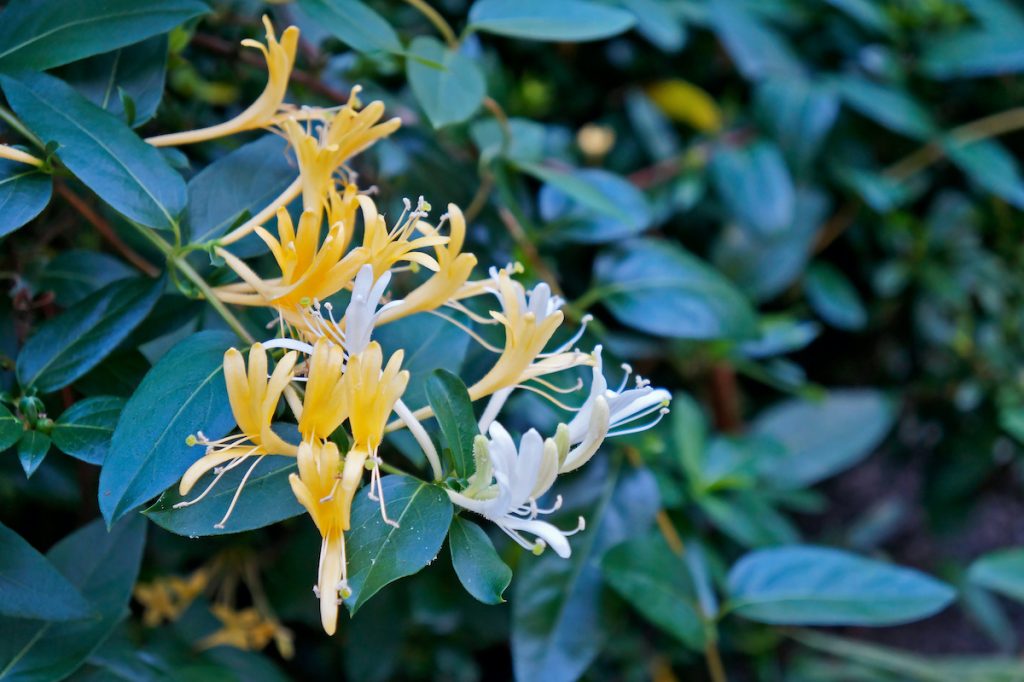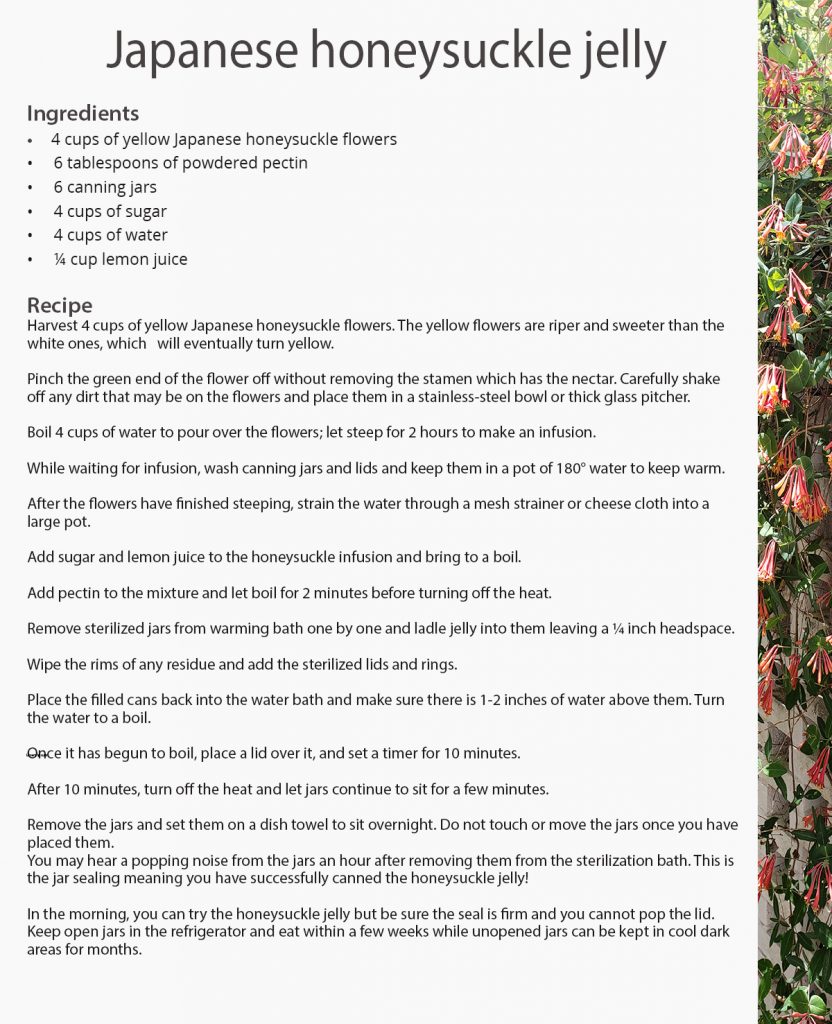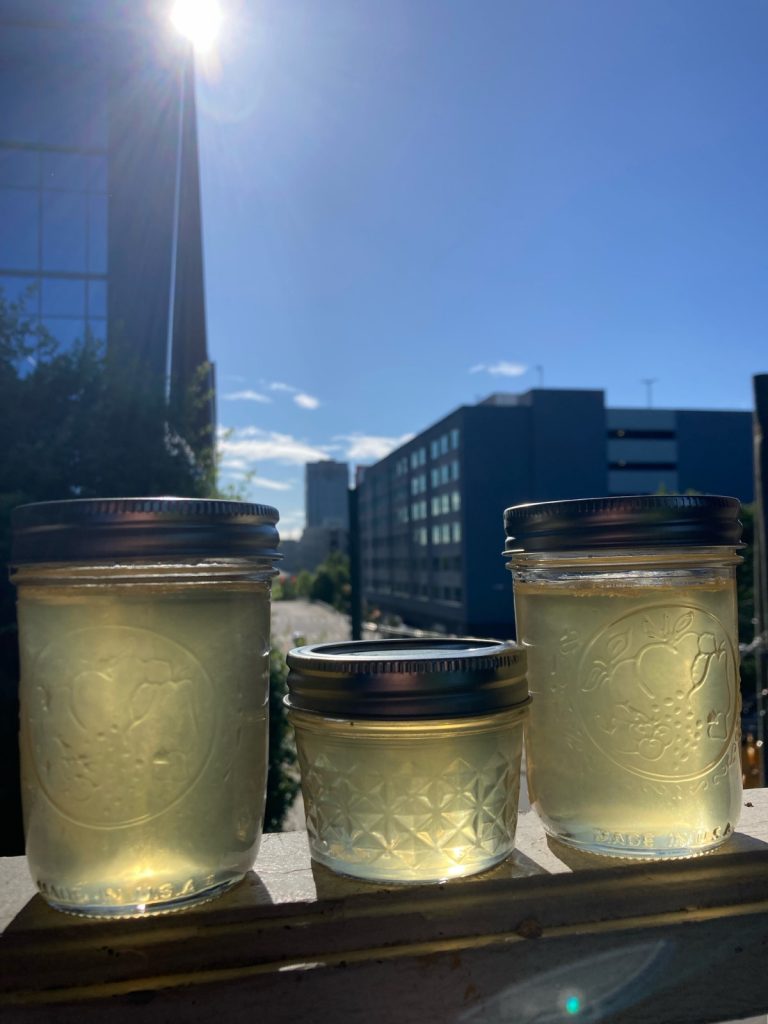This month’s species spotlight was first introduced to the United States via Long Island in 1806 from Asia. Far from its home in Japan and Korea, it was widely planted as an ornamental and states long promoted it for erosion control and wildlife habitat. It was initially introduced to the United States as an ornamental plant, for erosion control, and for wildlife forage and cover. Now, the woody vine is considered invasive in 26 states of the eastern United States.
You can find Japanese honeysuckle (Lonicera japonica) in disturbed areas, forest openings, roadsides, field edges, and floodplains. Japanese honeysuckle is a perennial trailing woody vine with white tubular flowers that turn yellow later in the season just before its purplish-black berries make an appearance. It thickly carpets the ground through rhizomes and grows by aboveground runners that girdle and smother shrubs and trees. Honeysuckle prefers full sun and well-drained soils, but will also tolerate partial shade and drought. In late spring, it produces pinkish-white flowers which fade into yellow. In the fall, the plant produces black-colored berries containing its seeds which are eaten and spread by birds. In warmer climates, the honeysuckle remains evergreen, but in the Triangle, winter temperatures cause the oblong leaves to die back. Even in winter, Japanese honeysuckle can be easily distinguished from native honeysuckles by its brittle, hollow stems with bark that easily peels off.
Removing Japanese honeysuckle
Japanese honeysuckle reproduces by seed or from the runners that can root at the node. Growth is aggressive, and the plant will climb over other desirable plants, walls, or other surfaces. Like all woody invasive species, Japanese honeysuckle is difficult to eradicate once it establishes itself. The most effective way to remove ground-spreading Japanese honeysuckle is by hand pulling. However, it is essential to completely remove the roots to prevent regrowth. Do not compost the vines but instead remove, dry out, and dispose of them to prevent resprouting. Vines smothering a plant should be cut at the root and carefully removed. Japanese honeysuckle foliage remains late into fall when many other plant species have already lost their leaves. This is advantageous if you choose to apply a glyphosate foliar spray as it will not harm any non-target species. Once applying the foliar spray, the honeysuckle should not be removed for a whole growing season to allow the plant to absorb the herbicide.
Many nurseries still sell Japanese honeysuckle under the cultivar “Hall’s honeysuckle” despite its invasive nature. Beautiful vining native alternatives to Japanese honeysuckle include coral honeysuckle (Lonicera sempervirens), crossvine (Bignonia capreolata), and Carolina Jessamine (Gelsemium sempervirens).
Creative Control: Japanese honeysuckle jelly
You may recognize Japanese honeysuckle as the species you harvested as a child for its honey-like taste. Although its berries are poisonous, its yellow flowers can be picked and added to salads and drinks. You can even make Japanese honeysuckle jelly which tastes and smells like its sweet nectar. It is simple, just be sure to follow proper canning protocol.



